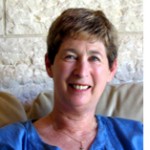By Dorothea Shefer-Vanson

MEVASSERET ZION, Israel — “Who among you knows the names of your great-grandparents?” the speaker asked. Only a few of us put our hands up. “Who of you has a family tree?” he continued. Even fewer of our group of English-speakers living in Israel responded positively. Our speaker, Neville Lamdan, proceeded to explain how in 1967, as a young diplomat serving in Israel’s foreign service in America, he had been inspired – as had many others – by Alex Haley’s book Roots to start investigating the origins of his family. The lecturer then described the process of searching for material, noting how the collapse of the USSR enabled formerly inaccessible archives to be opened up for research purposes. And obviously, the later development of the Internet helped in many ways.
I wondered why anyone would need Alex Haley or anyone else to spur interest in their family’s origins. It was a subject that always fascinated me. My parents came to England as refugees from Germany late in 1938. They were not allowed to bring any valuables or other possessions with them, but what they both brought out, quite independently (they were engaged but not married at the time), were family documents and correspondence detailing their respective families’ histories.
Although I ached to understand the contents of those papers they were inaccessible to me for a long time until I started to learn German some thirty years ago (my parents did not speak German at home, as in war-time England this was not considered advisable, and luckily both of them spoke English well).
Among those papers brought out of Germany were the lists typed on yellowing paper that were compiled in January 1939 by my grandfather, my mother’s father, Max Hirsch, in Sprottau (then in Silesia, Germany, now Szpratawa, Poland) detailing the history of his family. The neatly typed pages contain an introduction about the whereabouts and livelihoods of the Hirsch family, first in Gollub, Poland, and subsequently in Prussia, where certain privileged Jewish families were allowed to reside in the mid-eighteenth century.
The first page is dedicated to ‘our forebears’ (his great-grand-parents), Elias Hirsch-Dubrski, born on 16.3.1783 and his wife, Miriam Jakob-Kuski, born 14.11.1786, from Mattebuden, Danzig. The couple had seven sons and one daughter, and each of the following pages is devoted to one of those eight children, with neat columns listing their spouses and offspring. Dates and other details are given and cross-referenced in a numbered index at the end.
The amount of dedicated work that must have gone into preparing and typing up all this information is immense, and I can only stand back in awe at the dedication and effort that the grandfather I never met invested in the project at a time when it was becoming clear that the end of the Jewish communities throughout Germany, and Europe in general, was coming ever nearer.
On my father’s side, which originated in Holland, we owe a debt of gratitude to a distant relative, Sal van Son, who has been studying the family’s history for many years, and has even produced several books on the subject (in Dutch). One of them, The van Son Family, the History of a Jewish Family from the Gelderland and Overijssel Provinces; Two Centuries of Dutch-Jewish Life in Sorrow and Joy, recounts the history of the van Sons in various parts of Holland, starting in 1757. My father’s branch of the family moved to Hamburg in 1823, and became well-established there. My father, Manfred van Son, had the book translated into Hebrew and English, and he and various other family members added segments describing their own branches. A bilingual English-Hebrew edition of the book was published, so that we now have a well-fleshed-out account of our family’s history. Credit is also due to Jürgen Sielemann, former head of the Hamburg State Archive, who established the German-Jewish Geneological Society, and continues to be active in it. He has been the source of much valuable documentary material about our family over the years.
My own small contribution has been to prepare a graphic version of the two family trees, drawn by hand in the pre-digital era (1980) on paper used for architects’ plans measuring 22 inches by 27 inches, and containing over one hundred names, dating back to 1785. The chart was a handy reference when our American cousins visited us recently. Unfortunately, I have not been able to continue the work, and so by now the chart is hopelessly out of date. I hope that each branch of my extended family (my two sisters each have seven or eight children, who in turn have many children of their own), will continue the work somehow, some day.
*
Shefer-Vanson is a freelance writer based in the Jerusalem suburb of Mevasseret Zion. She may be contacted via dorothea.shefer@sdjewishworld.com